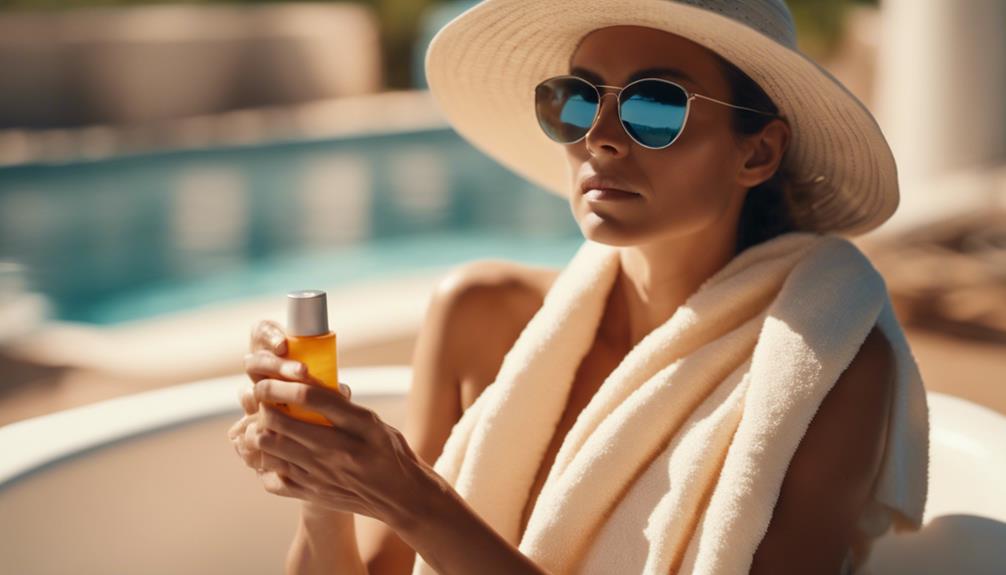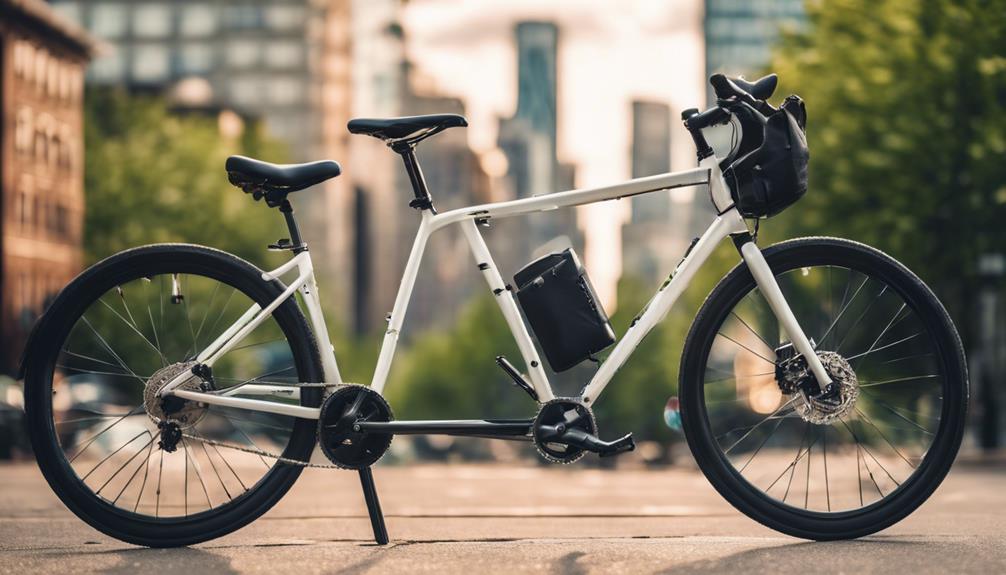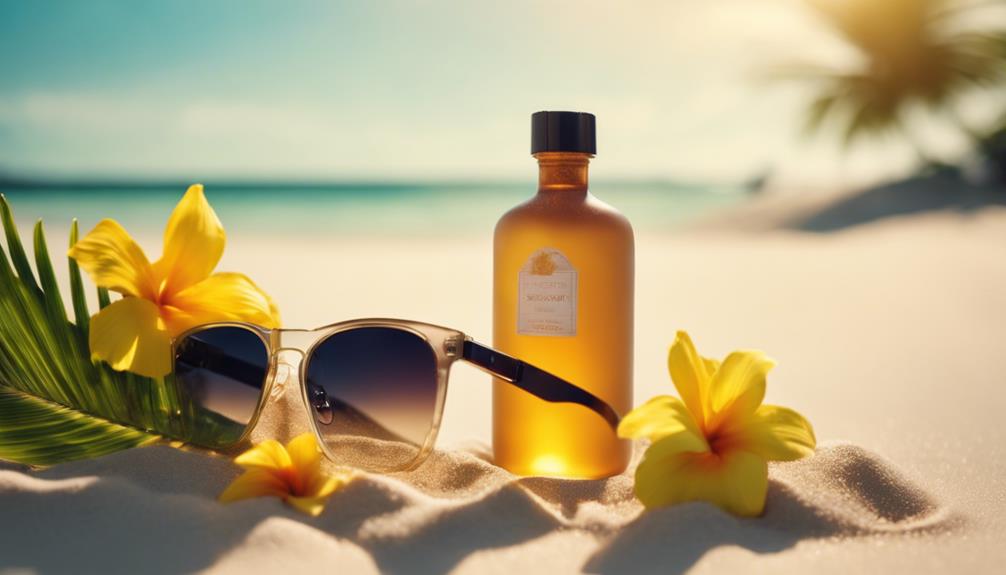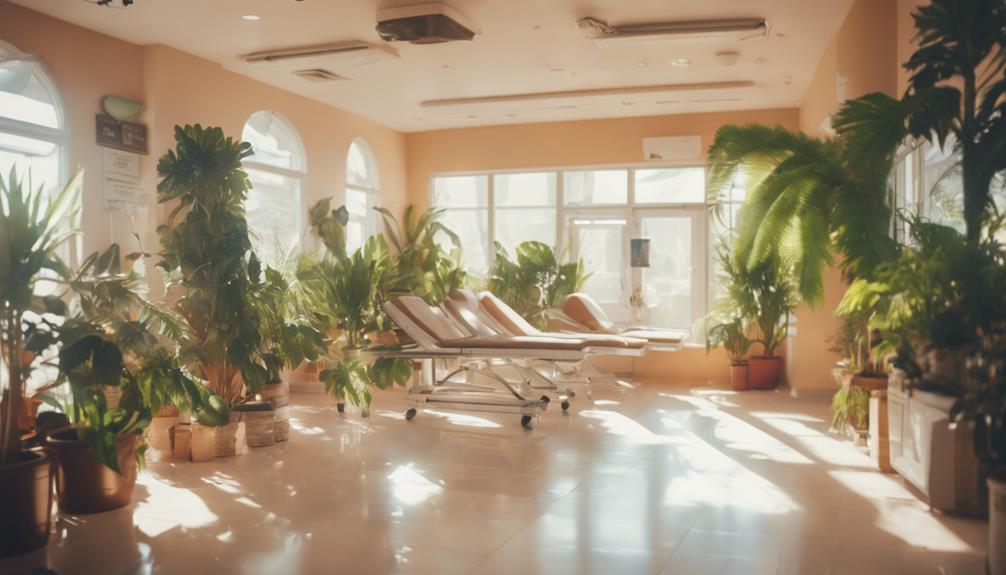To shield your skin from the dangers of tanning beds, it is crucial to limit your sessions. Tanning beds release harmful UVA rays, which can increase the chances of skin cancer and premature aging. Always remember to apply a broad-spectrum sunscreen with SPF 30 or higher and wear UV-blocking goggles to protect your eyes. You may want to consider alternative options such as self-tanners or professional spray tans for a safer way to achieve that desired glow. Select salons that prioritize safety and regularly maintain their equipment. It is important to educate yourself and others on the hazards of UV exposure. There is a wealth of information available on skin protection strategies and safe tanning practices that can assist you in maintaining healthy skin.
Key Takeaways
- Apply broad-spectrum sunscreen with at least SPF 30 before using tanning beds, and reapply regularly to protect your skin from harmful UV rays.
- Use UV-blocking goggles to shield your eyes from the intense UV radiation emitted by tanning beds.
- Limit tanning bed sessions to reduce overall UV exposure and decrease the risk of skin damage and cancer.
- Consider safer alternatives, such as self-tanners or professional spray tans, to achieve a bronzed look without UV exposure.
Understanding UV Exposure Risks
When you expose your skin to tanning beds, you greatly increase your risk of skin cancer and premature aging due to the concentrated UVA rays they emit. Each time you step into a tanning bed, you're subjecting your skin cells to harmful UV radiation that can damage DNA, promoting cancerous growth.
Regular use can greatly heighten your chances of developing melanoma, especially if you start young. Not only does UV exposure accelerate the aging process, leading to wrinkles and age spots, but it also weakens your immune system, making you more susceptible to infections.
You might even experience increased sensitivity to sunlight or allergic reactions. Understanding these risks is vital for making informed decisions about your skin health.
Health Consequences of Tanning Beds
Using tanning beds can lead to serious long-term skin damage, including premature aging, collagen breakdown, and an increased risk of skin cancer. You might think that occasional tanning is harmless, but even infrequent use can result in irreversible skin issues.
Here are three key health consequences to take into account:
- Increased Skin Cancer Risk: Regular tanning bed use greatly raises your chances of developing skin cancer, especially when started at a young age.
- Premature Aging: Tanning beds accelerate the aging process, leading to wrinkles, sagging skin, and age spots.
- Immune System Suppression: UV exposure weakens your immune response, making you more vulnerable to infections.
Prioritizing your skin health over temporary tan desires is essential for maintaining a youthful appearance and overall well-being.
Essential Protective Measures

Prioritizing skin health requires implementing protective measures to shield yourself from the harmful effects of UV exposure, especially if you choose to use tanning beds.
First, apply a broad-spectrum sunscreen with at least SPF 15 and reapply it regularly.
Don't forget to wear UV-blocking goggles to protect your eyes from damaging rays.
Opt for tightly woven fabrics, wide-brimmed hats, and UV-blocking sunglasses for additional coverage.
Limit your tanning bed sessions to minimize overall UV exposure, and consider safer alternatives like self-tanners or bronzing lotions to achieve that bronzed look without the risks.
Selecting Safe Tanning Salons
Choosing a tanning salon that follows safety and sanitation guidelines is essential for protecting your skin from potential harm. To guarantee a safe tanning experience, consider these key factors:
- Check Compliance: Make sure the salon adheres to FDA guidelines and regularly inspects its equipment. Ask about the age and maintenance of the tanning bed bulbs.
- Inquire About Sanitization: Verify that the salon implements strict cleaning practices. Regularly disinfected beds help prevent skin issues and infections.
- Educate Yourself: Trust salons that prioritize educating clients about safe tanning practices and provide guidance on proper equipment care.
Trending Products for Protection

Explore the latest tanning products designed to enhance protection while achieving a sun-kissed glow.
In 2024, consider investing in high-quality tanning bed face covers and UV-blocking goggles, which shield your skin and eyes from harmful rays.
Look for broad-spectrum sunscreens with SPF 30 or higher that are specifically formulated for tanning bed use; they'll help protect your skin during sessions.
Additionally, hydrating lotions with antioxidants can prepare your skin while minimizing damage.
Self-tanners and bronzing lotions are trending alternatives too, offering a radiant appearance without UV exposure.
Alternatives to Tanning Beds
If you're looking to achieve a sun-kissed glow without the risks associated with tanning beds, there are plenty of safe alternatives to contemplate. Here are three options that can give you that bronzed look without the harmful UV exposure:
- Self-Tanners: These products come in lotions, sprays, or mousses, allowing you to control the depth of your tan. Just apply evenly and let it develop!
- Spray Tans: Professional spray tans offer a quick, even tan without the need for UV exposure. Find a reputable salon for the best results.
- Bronzing Lotions: These provide a temporary tint that washes off easily, perfect for special occasions or a night out.
With these alternatives, you can enjoy a beautiful glow while prioritizing your skin health.
Educating Yourself and Others

Educating yourself and others about the dangers of tanning beds is essential for promoting skin health and preventing long-term damage.
Start by understanding the risks associated with UV exposure, including increased skin cancer chances and premature aging. Share this knowledge with friends and family to raise awareness about the dangers of tanning beds.
Encourage discussions about safer alternatives, like self-tanners or spray tans, that don't expose skin to harmful UV rays. Utilize social media platforms to spread information and resources on skin protection.
When you empower yourself and those around you with accurate knowledge, you cultivate a culture of skin health and safety.
What Are the Dangers of Tanning Beds and How Can I Protect My Skin?
Tanning bed UV risks can lead to skin damage and increase the risk of skin cancer. Protect your skin by avoiding tanning beds altogether. Use sunscreen with a high SPF, wear protective clothing, and seek shade during peak UV hours to minimize the harmful effects of tanning bed UV risks.
Conclusion
As you step away from the allure of tanning beds, remember: the quest for that perfect glow shouldn't come at the cost of your skin's health.
With each session, the hidden dangers lurk, threatening more than just your appearance.
But what if you could achieve that sun-kissed look without the risks?
By embracing safer alternatives and protective measures, you hold the key to radiant skin.
The choice is yours—will you risk it, or will you protect what matters most?










